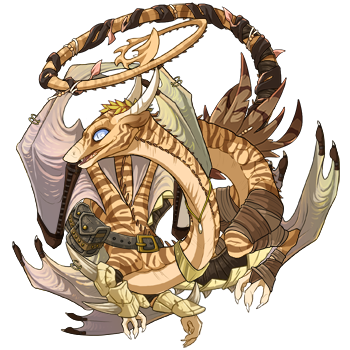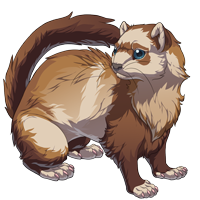

Kyphosis
(#10367852)
Level 8 Spiral
Click or tap to view this dragon in Predict Morphology.
Energy: 0/50

Expand the dragon details section.
Collapse the dragon details section.
Personal Style
Apparel










Skin
Scene

Measurements
Length
2.19 m
Wingspan
2.39 m
Weight
66.45 kg
Genetics
Ivory
Tiger
Tiger
Beige
Shimmer
Shimmer
Brown
Spines
Spines
Hatchday
Breed
Eye Type
Level 8 Spiral
EXP: 8081 / 16009





STR
5
AGI
22
DEF
16
QCK
18
INT
26
VIT
15
MND
16
Biography
Kyphosis (from Greek κυφός kyphos, a hump) refers to the normal convex curvature of the spine as it occurs in the thoracic and sacral regions. Inward concave curving of the cervical and lumbar regions of the spine is called lordosis. The term kyphosis can also be used to describe excessive kyphosis or overcurvature when it is also known as hyperkyphosis. Kyphosis can be called roundback or Kelso's hunchback. It can result from degenerative diseases such as arthritis; developmental problems, most commonly Scheuermann's disease; osteoporosis with compression fractures of the vertebrae, or trauma. A normal thoracic spine extends from the 1st to the 12th vertebra and should have a slight kyphosis ranging from 20° to 45°. When the "roundness" of the upper spine increases past 45° it is called "hyperkyphosis". Scheuermann's kyphosis is the most classic form of hyperkyphosis and is the result of wedged vertebrae that develop during adolescence. The cause is not currently known and the condition appears to be multifactorial and is seen more frequently in males than females. In the sense of a deformity, it is the pathological curving of the spine, where parts of the spinal column lose some or all of their lordotic profile. This causes a bowing of the back, seen as a slouching posture. While most cases of kyphosis are mild and only require routine monitoring, serious cases can be debilitating. High degrees of kyphosis can cause severe pain and discomfort, breathing and digestion difficulties, cardiovascular irregularities, neurological compromise and, in the more severe cases, significantly shortened life spans. These types of high-end curves typically do not respond well to conservative treatment and almost always warrant spinal fusion surgery, which can successfully restore the body's natural degree of curvature. The Cobb angle is the preferred method of measuring kyphosis.
Click or tap a food type to individually feed this dragon only. The other dragons in your lair will not have their energy replenished.
Feed this dragon Insects.
Feed this dragon Meat.
This dragon doesn't eat Seafood.
This dragon doesn't eat Plants.
Exalting Kyphosis to the service of the Plaguebringer will remove them from your lair forever. They will leave behind a small sum of riches that they have accumulated. This action is irreversible.
Do you wish to continue?
- Names must be longer than 2 characters.
- Names must be no longer than 16 characters.
- Names can only contain letters.
- Names must be no longer than 16 characters.
- Names can only contain letters.










